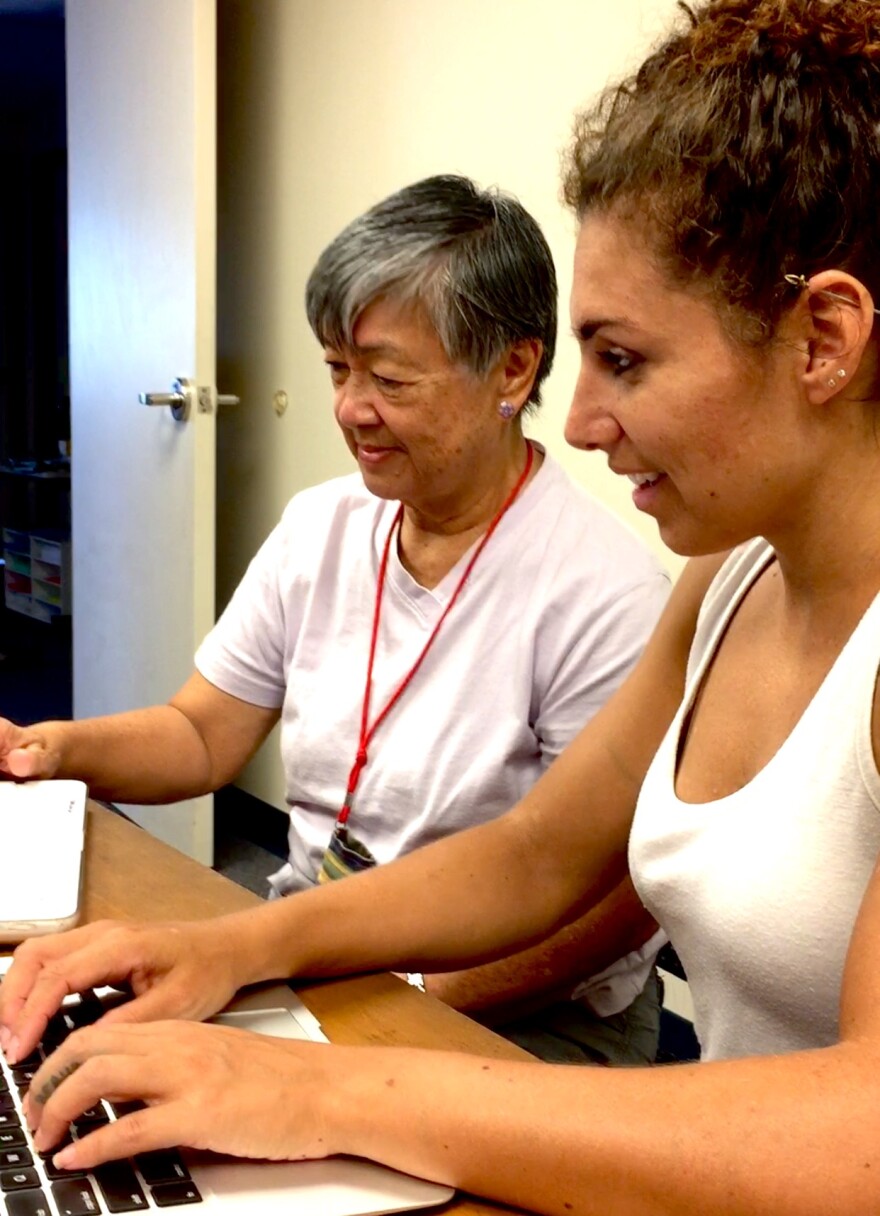In 2013, scholars and linguists worldwide were stunned by the discovery of a new indigenous language in Hawai‘i. Hawai‘i Sign Language was the first new language discovered in the U.S. since the 1930’s. There are about seven thousand spoken languages in the world, half of which are expected to be lost in the next fifty years. An even more dire fate could await existing sign languages. HPR’s Noe Tanigawa reports on efforts to preserve Hawai‘i Sign and its unique view of the world.
Hawai‘i School for the Deaf and BlindStudent Body Government is hosting a Thanksgiving Dinner and

fundraiser tonight from 6pm at the School on L?‘ahi Avenue. Donations are gladly accepted to help fund programs for the Deaf and Blind at Camp Erdman.
Admission to the Thanksgiving dinner is $10 for anyone over 18, $7 for students and seniors, free for kids five and under. Find outmore about the dinner and where to donate here.
Signs of Self, independent living services for hard of hearing, deaf and deaf/blind
CSC - Comprehensive Service Center for People who are Deaf, Hard of Hearing or Deaf-Blind
For a look at HSL and ASL side by side, click here.
In an average population, one in a thousand individuals is born deaf, and the latest figures suggest about 3,700 deaf people in Hawai‘i. That’s quite a few! Why don’t I know anybody?
“You’ve never met any because deaf people in Hawai‘i now form a separate community.” So says James “Woody” Woodward, Co-Director of the Centre for Sign Linguistics and Deaf Studies, Chinese University of Hong Kong and Adjunct Professor of Linguistics at UH M?noa. He says Hawai‘i Sign Language, HSL, is an indigenous language, in use here by the late 1800’s. Deaf people may have had it better in old Hawai‘i, where a letter from 1821 seems to indicate the deaf were more integrated in the community and many hearing people probably knew some sign language.
“I thought I could hear." Woodward served as translator for Linda Yuen Lambrecht, who had three hearing sisters and two deaf brothers. "I had three hearing sisters and two deaf brothers. My brothers signed so I thought I was hearing because I was like my sisters. But then I did something with music and I couldn’t hear any sound but I could feel the vibrations. Then I tried the telephone. But still I thought maybe I was hearing. Then I realized I wasn’t hearing, I was deaf when I was four or five years old.”

In Lambrecht’s youth, the deaf were given body hearing aids that transmitted vibrations, and signing was discouraged because speech was considered more mainstream. After WWII, more deaf moved to Hawai‘i to work or retire and HSL took a second seat to American Sign language, ASL.
Linguists know that languages capture a world view, unique to the communities in which they develop. A poster at the Comprehensive Service Center for the Deaf on Beretania Street maintains, “HSL’s style of joking, teasing, and insulting each other could have strengthened camaraderie and maintained cohesion.”
Interesting. For the past three years Lambrecht, Woodward, and others have been working to document HSL, recognized as unique because 91% of its vocabulary is different from other languages. In their new curriculum, Lesson One begins saying, Deaf people have two names, one given by their parents, and a name-sign given when you’re accepted by the Deaf community. The HSL name often highlights a physical characteristic or behavior, often humorous, blunt, and personal.
Lambrecht says she has more facial expression with HSL, which uses the body, head to lower torso, and even the leg to sign for kick. But sign languages are much more than action gestures, the signs might be based on cultural practices, but they evolve. For example, I asked, what does that mean? Linda made a roof shape with her finger tips, then a wave.
“It means bus stop. It’s the sign for house, changes to this, drop this hand, and you wave for the bus to stop,” Who would have guessed?
Woodward says, before the 1960’s, HSL was in wider use, and what’s called CHSL, Creolized Hawai‘i Sign Language, was also used. Woodward says there are about thirty people remaining who can use that pretty much 50-50 mix of ASL and HSL.
“I’ve met several old people who used to know HSL but now they’ve lost it, they haven’t used it in many years. Some people before the 1960’s tended to use it more but many of those people are gone right now. I remember them from before. They were beautiful signers.”
“(HSL) It’s about as endangered as you can get. If you use the University of Hawai‘i’s endangered languages list, it’s critically endangered, which is the worst state for a language to be in.”
You don’t think it could ever be widespread again?
“Oh yes, I think it can. It’s exciting! It’s just very rare that you get to the point where the language isn’t dead before you get there.”
In the last three years, a dictionary and teaching materials have been created, along with a video archive of speakers. There is a split in the Deaf community around HSL, some feel it is not a unique language or worthy of preservation.
Lambrecht and Woodward estimate the Big island has three people who use HSL regularly, but they’re isolated. On Kaua‘I, there maybe two HSL signers, maybe five on O‘ahu, and two more on Moloka‘i.
Another fascinating part of the Deaf community is composed of the hearing Children Of Deaf Adults, they're called CODAs. Many CODA feel they have their own culture at the interface of hearing and Deaf communities.
Anyone interested will find a course on documenting, describing and preserving Hawai‘i Sign in the Linguistics Department at UH Manoa, taught by Professor Woodward. There is already an HSL study guide and bilingual dictionary, and Lambrecht is working to share her knowledge and document other HSL signers.




